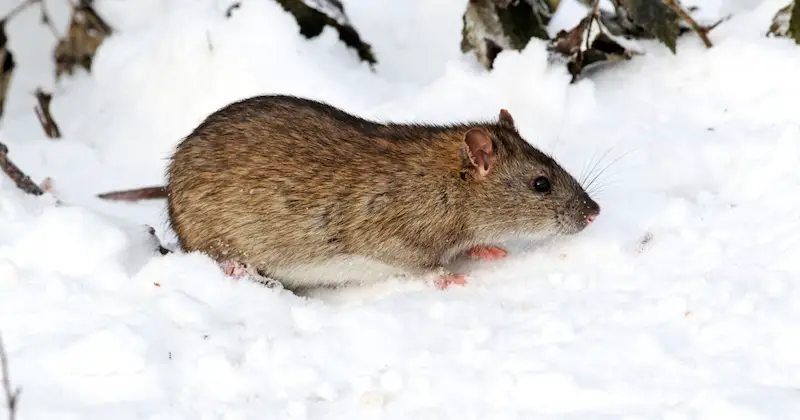Winter Rat Prevention: Effective Strategies for a Rodent-Free Home

Your home can become a target for unwanted guests during winter, especially rodents. Understanding how these pests find their way inside can help you take proactive measures to prevent it.
Rats are resourceful creatures that seek warmth and food, making your home attractive during winter. Knowing what to look for and how to prepare is key to keeping your space rat-free.
Practical winter rat prevention tips also come in handy to ensure a pest-free environment during the colder months. Regular inspections and preventative practices are essential in this effort.
In particular, sealing entry points and eliminating potential food sources can significantly reduce the chances of an infestation.
Taking the right steps now can save you from the hassle and expense of pest control later. With the right strategy, you’ll effectively protect your home from these winter intruders.
Understand Winter Rat Behavior

During winter, rats seek sheltered environments to escape harsh conditions. Your home can become an attractive target if it offers warmth and food sources.
Why Rats Invade Homes in Winter
Rats are primarily driven by the need for warmth, food, and safety when temperatures drop. In winter, their natural food sources become scarce, prompting them to invade human dwellings.
It becomes increasingly appealing if your home has exposed food, such as pet food or pantry items. Additionally, rats may see this as an ideal nesting site if there are cozy corners with bedding materials, such as insulation or fabric.
Understanding their motivations helps in implementing winter rat prevention tips. To minimize attraction, keep your home organized and ensure food is stored in sealed containers.
Common Entry Points for Rats
Rats can squeeze through surprisingly small openings. Gaps as small as half an inch are enough for them to gain access. Key entry points include:
- Holes or cracks in walls or foundations
- Vents that are not properly screened
- Doors and windows with gaps or damaged seals
- Pipes and wires that enter your home without adequate sealing
Regularly inspect these areas and winterproof your home against rats. Fill gaps with appropriate materials and install tight-fitting screens where necessary. This proactive approach significantly reduces the risk of an infestation.
Effective Rat Prevention Strategies

Taking proactive measures is essential for keeping rats away in cold weather. This section covers specific techniques for ensuring your home remains rat-proof during winter:
I. Home Winterproofing Techniques
Start by sealing gaps or holes around your foundation, windows, and doors. Use materials like steel wool or caulking to fill small openings. Pay attention to areas where utility lines enter your home, as these can be entry points.
Inspect vents and screens to confirm they’re intact. Installing tight-fitting vent covers can prevent rats from entering through these spaces. Additionally, ensuring your roof is in good condition helps to eliminate nesting spots.
Keep your yard tidy by trimming back shrubs and trees. This reduces potential habitats for rats and limits access to your home. Remember to store firewood at least 18 inches off the ground and away from the house.
II. Rat-Proofing Essentials
To effectively rat-proof your home for winter, consider using heavy-duty materials for any construction or repairs. Choose metal containers for storing food and waste. Make sure trash bins have secure lids that rats cannot access.
It’s also wise to store pet food in airtight containers. Minimizing food sources is a key strategy in winter rodent control. Vacuum regularly and avoid leaving out uneaten food.
Inspect all areas of your home, including attics and basements, to remove clutter where rats might nest. Regular cleaning ensures that food particles or potential nesting materials don’t accumulate unnoticed.
III. Winter Rodent Control Methods
If you suspect rats are present, you can employ various methods to effectively deter them. Set traps in areas where you notice signs of activity. Snap traps are a humane option that provides quick results.
Additionally, consider using natural repellents like peppermint oil. To discourage rats, place cotton balls soaked in the oil near entry points. Ultrasonic pest repellents can also serve as a noninvasive control strategy.
Consistently monitor and keep your home rat-free. Regular inspections during winter will help you detect and address potential issues before they escalate.
IV. Call the Professionals to Keep Rats Under Control
When winter arrives, keeping rats out becomes essential. If you’ve taken preventive measures but still encounter issues, it's time to call in the professionals.
Expert pest control services can effectively assess your property for vulnerabilities. They know how to keep rats out in winter by identifying entry points and providing tailored solutions.
Consider these benefits of professional help:
- Thorough inspections: Professionals like Critter Stop offer free inspections to uncover hidden problems.
- Targeted strategies: They utilize effective methods that align with your specific situation.
- Safe removal: A humane approach ensures that wildlife is handled responsibly and ethically.
Critter Stop, for example, has a fantastic reputation and online customer reviews because it provides high-quality work and excellent customer service. Their trained experts stay updated on the latest practices in winter rat prevention.
If you're struggling with rat issues this winter, don't hesitate to contact professionals. They can give you the peace of mind you need and ensure your home remains rodent-free throughout the season.
























